

Natural History of Triangle Island


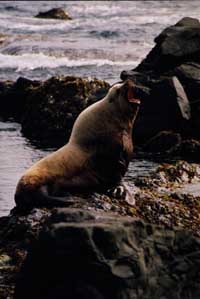
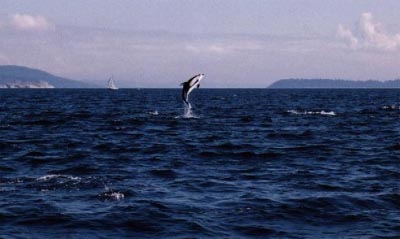
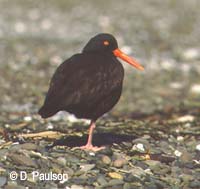
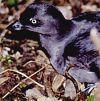
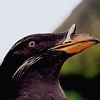
Rhinoceros Auklet
Cassin's Auklet
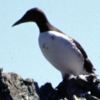
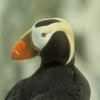
Common Murre
Tufted Puffin
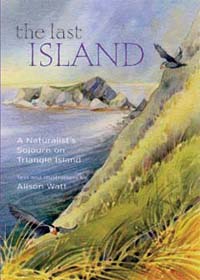
 |
||||||||||||||||||||||||
 |
||||||||||||||||||||||||
|
Natural History of Triangle Island
|
||||||||||||||||||||||||
| Situated near the northern limits of the California Current oceanographic zone, and within the territorial boundaries of the Kwakiutl District Council, the Anne Vallée Ecological Reserve at Triangle Island supports the largest and most diverse seabird colony in British Columbia. | ||||||||||||||||||||||||
| Triangle Island has a cool, moist climate, characterized by moderate annual precipitation (mostly rain), frequent fog, and strong winds. The winds occasionally reach hurricane force. These environmental conditions inhibit trees from growing on the island, but soils rich in nutrients and heavily fertilized by birds create ideal conditions for growth of low-lying vegetation: salmonberry fluorishes, and other common species include Pacific crabapple, tufted-hairgrass, salal, and a variety of ferns. |  |
|||||||||||||||||||||||
 |
As with its terrestrial habitat, the nearshore waters around Triangle Island teem with life, including many species of shellfish, crabs, urchins, sponges, and an abundance of fish. The terrestrial invertebrate fauna remains largely unstudied, apart from brief, pioneering surveys by researchers from the British Columbia Provincial Museum - now the Royal British Columbia Museum - in the 1950s. |
|||||||||||||||||||||||
 |
||||||||||||||||||||||||
| Few terrestrial mammals inhabit Triangle, the only native species being Keen's mice and Townsend's voles. In addition, domestic rabbits were introduced by lighthouse keepers in the early 1900's, and are now well established. Triangle provides important mating and pupping sites for two species of marine mammals - harbour seals and Steller's sea lions. Additionally, hundreds of subadult male California Sealions spend the spring loafing on Triangle's beaches, but disappear by mid-summer. | ||||||||||||||||||||||||
 |
||||||||||||||||||||||||
| The Steller's sea lion rookery at Triangle Island is the largest in Canada, and in the aftermath of alarming population declines in parts of Alaska in recent decades, is now the second largest in the world. In addition, a few immature male elephant seals loaf on the island's beaches every summer, and sea otters and a variety of cetaceans, including grey and humpback whales, orcas, and Pacific white-sided dolphins, can occasionally be seen passing by within sight of the island. | ||||||||||||||||||||||||
 |
Triangle Island is home to many species of breeding birds, including Northwestern Crows, Common Ravens, Fox and Song sparrows, Winter Wrens and Orange-crowned Warblers. Many other species of birds, including a variety of shorebirds, visit the island on their spring and fall migrations. Among shorebirds, Triangle supports only a breeding population of Black Oystercatchers. The island also supports several nesting pairs of Bald Eagles and Peregrine Falcons, top predators that must find life on the island easy. | |||||||||||||||||||||||
| Seabirds, 12 breeding species in all, numerically dominate the avifauna of Triangle Island. The island supports a very large population of Cassin's Auklets (possibly 50% of the world population!), British Columbia's largest colonies of Tufted Puffins and Common Murres, and a sizable population of Rhinoceros Auklets. Triangle's other breeding seabirds include Pelagic Cormorants, Leach's and Fork-tailed Storm-petrels, Glaucous-winged Gulls, Pigeon Guillemots, and several more. It is the presence of such large, internationally significant seabird populations that bring researchers from the Centre for Wildlife Ecology to Triangle Island every spring. |  |
|||||||||||||||||||||||
 |
||||||||||||||||||||||||
|
Rhinoceros Auklet
|
Cassin's Auklet
|
|||||||||||||||||||||||
 |
 |
|||||||||||||||||||||||
|
Common Murre
|
Tufted Puffin
|
|||||||||||||||||||||||
 |
||||||||||||||||||||||||
| "The Last Island", published in 2002, gives an intimate overview of the natural history of Triangle Island. Alison Watt, a poet, artist, and researcher, wrote the book describing her two visits to the island, separated by more than 15 years. She tells the story of a season on the island, illustrated with her own watercolours of the landscapes, flora and fauna. The book is available at bookstores or from Harbour Press Publishing (http://www.harbourpublishing.com/index.php). | ||||||||||||||||||||||||